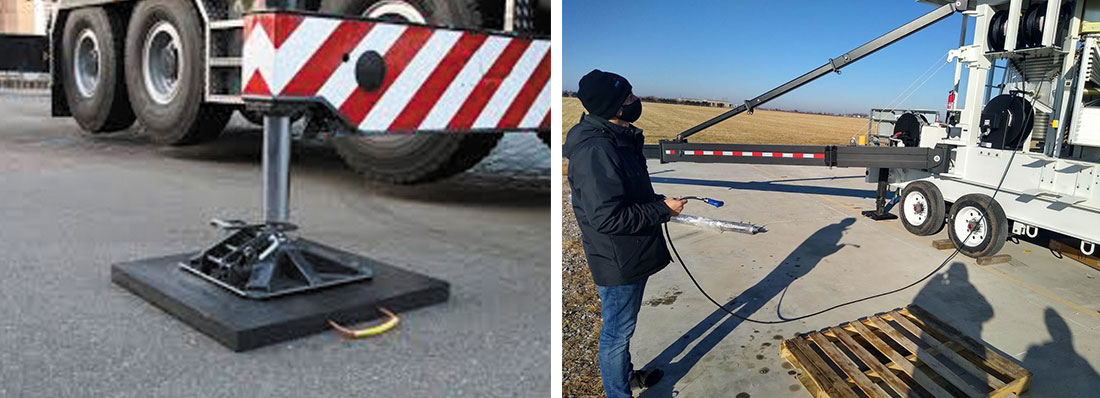Some workers opt for using wooden outrigger pads. Wood is inexpensive, and very easily sourced. While using wooden pallets as an outrigger pad may seem like a great idea, it has objective drawbacks that should sway you away from using them at your work site.
Wood is just not as structurally sound as a synthetic material. To make matters worse, wood is porous and can easily absorb water and chemicals. This can weaken the structural integrity of the wood causing it to break apart quickly and become unreliable. Another drawback of wood’s porous nature is, as water is absorbed, the wood becomes much heavier, while offering less safety. The heavier your outrigger pad is the more likely someone is to injure themselves placing it, and the less likely it is that the pad will be used at all.

The safest outrigger Pads constructed from High Density Polyethylene, an extremely strong yet lightweight synthetic material. Crane pads made from HDPE can absorb thousands of pounds of force, while only weighing in at around 30 pounds for a 2×2’ pad. It is waterproof and chemical resistant, so it won’t swell up with water and become heavier. Additionally, High Density Polyethylene will stand the test of time and hold its own against harsh elements. One High Density Polyethylene pad may be more expensive than a wooden one, but it will last significantly longer and is far safer.
Back


